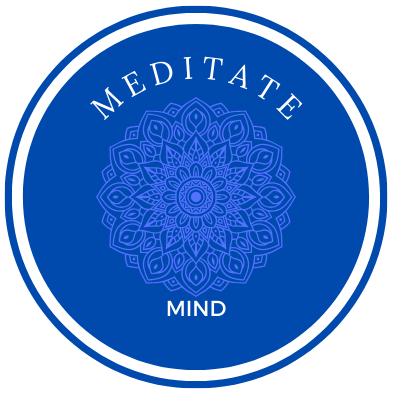
Let’s start by tackling the beast known as anxiety. It’s more than just feeling nervous—it’s like a storm that can disrupt your day. Anxiety can mess with your work, relationships, and overall happiness.
Meditation can be a powerful ally and there’s some serious science behind this. Research shows that meditation can actually change your brain. It increases activity in areas linked to emotion regulation and decreases activity in the ‘fight or flight‘ centre of the brain.
Let’s talk about my journey. Like many of you, I’ve dealt with moments of anxiety and stress in life. But through meditation, I’ve found a way to calm the chaos. Taking time each day to quiet my mind has given me clarity and strength. Meditation is like my secret weapon, helping me face life’s challenges with a calm mind. It shows that anyone can make real progress in managing anxiety by giving meditation a try.
Now that you understand the impact of anxiety and meditation’s role, let’s move into creating the right environment for your practice. Because when you choose something that resonates with you for your meditation space, you’re setting yourself up for success. And that’s exactly what we’ll tackle next.
Getting Started: Creating Your Meditation Space
I’m going to show you how to set up your own meditation space, because believe me, having a designated spot can make all the difference. You don’t need a lot of room or fancy accessories; it’s more about carving out a little sanctuary where you can unwind.
To start, choose a spot in your home that’s away from the hustle and bustle. Whether it’s a cozy corner of your bedroom or a peaceful part of your living room, the key is consistency. Your brain will begin to associate this spot with serenity, helping you slip into a calm state more easily over time.
Consider the essential elements to enhance your space: a comfortable cushion or chair, calming colors, and perhaps some plants or simple decorations to establish a tranquil vibe. Don’t worry too much about making it perfect. Choose something that resonates with you and creates a soothing atmosphere.
Personalize your meditation space to reflect your needs. Maybe you’re soothed by the scent of lavender or uplifted by the gentle sound of a water feature. Integrate items that engage your senses in a non-overwhelming way, and remember, you can always adjust your approach down the road.
With your meditation space ready, you’ll be able to focus on the techniques that can help manage your anxiety. Picture this: you sit down in your tranquil spot, take a deep breath, and you’re primed to explore the various meditation methods that I’ll cover in the next section.
Meditation Techniques that Tackle Anxiety
You’re about to find out about varied approaches to meditation that can directly address anxiety symptoms. From focused breathing exercises to mindfulness practices, these techniques aim to offer mental reprieve and pave the way to inner peace.
Breathing exercises serve as the cornerstone of a successful meditation practice, especially for anxiety management. I’m going to walk you through simple patterns that can help regulate your nervous system and quiet your mind.
Guided meditation is another brilliant tool. By listening to a voice that directs your thoughts and visualizations, you can often find it easier to pull away from anxious thinking and into a state of calm and focus.
Now, let’s touch on mindfulness and acceptance meditation. This isn’t just about calming the mind—it’s also about learning to stay grounded in the present moment without judgment. It’s a powerful method that can diminish the overwhelming power of anxious thoughts over time.
The body scan technique can also be particularly effective for anxiety. By methodically focusing on different parts of the body, this practice encourages the release of physical tension, which is often closely tied with mental stress.
You can always adjust your approach down the road, but these techniques can function as a sturdy starting block in your fight against anxiety.
Cultivating a Consistent Meditation Practice
A consistent meditation practice is your key to managing anxiety long-term. It’s not about perfection; it’s about progress. Start with a schedule that feels manageable, even if it’s just five minutes a day. As you grow more comfortable, you can gradually increase the time you meditate. Remember, the goal is to make meditation a regular part of your life, not an occasional quick fix.
You’re going to find out that hurdles will appear on your meditation journey. Maybe it’s a lack of time, distractions, or sometimes, a wandering mind. Don’t worry too much about these. They’re completely normal. The important thing is to acknowledge them and gently bring your focus back to your practice. This, too, is part of the training for your mind.
If you want to keep a close eye on your progress with meditation and its impact on your anxiety, consider keeping a meditation journal. This can be a space where you jot down your experiences, feelings, and any changes you notice over time. Over weeks and months, these notes can serve as a testament to the positive changes and can motivate you to keep going even when it gets tough.
Choose something that resonates with you when it comes to meditating. This could be an app, a specific method, or a time of day. If it feels right, you’re more likely to stick with it. Remember, your first attempt doesn’t need to be your last. Try different techniques until you find the one that works best for you.
I really hope that these meditation tips provide you with a starting point in managing your anxiety. It’s a journey of self-discovery and self-care, one where small, consistent efforts can lead to significant benefits. Thanks for taking the time to read, and here’s to finding tranquility and strength within yourself, one day at a time.
